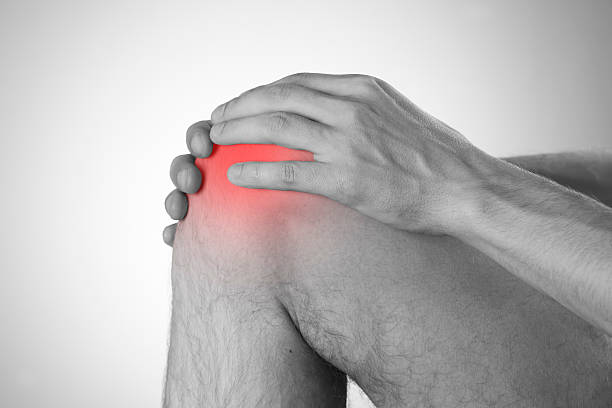Health Conditions, Joint Health
Difference Between SI Joint Pain And Piriformis Syndrome
Are you having lower back and buttock pain? It could be related to SI joint pain or piriformis syndrome. Understanding the differences between the two illnesses is critical for accurate diagnosis and therapy.
Understanding the SI Joint and Its Role in Pain
The sacroiliac joint (SI joint) is positioned in the pelvis and connects the sacrum and ilium. This joint transmits forces between the upper body and the legs. SI joint pain can result from inflammation or malfunction of this joint.
A variety of conditions can cause SI joint pain, including arthritis, pregnancy, trauma, and repetitive stress injuries. SI joint pain symptoms vary from person to person, but common signals include pain in the lower back, buttocks, and, in some cases, the legs. Some people may also feel tight or unstable in their pelvis.

Causes and Symptoms of SI Joint Pain
Arthritis, particularly ankylosing spondylitis, can result in SI joint pain. Inflammation in the joint can cause discomfort and restricted movement. Furthermore, hormonal changes during pregnancy can weaken the ligaments surrounding the SI joint, producing pain.
SI joint discomfort symptoms might be mistaken for those of other lower back diseases, making proper diagnosis difficult. However, one distinct feature is that SI joint discomfort usually affects only one side of the lower back and buttocks. Certain activities, such as walking, climbing stairs, or standing for extended periods of time, may exacerbate the discomfort.
Causes and Symptoms of Piriformis Syndrome
Piriformis syndrome occurs when the piriformis muscle, deep in the buttocks, tightens or spasms. This can compress the sciatic nerve, resulting in pain. The piriformis muscle controls the rotation and stabilization of the hip joint.
Piriformis syndrome can be caused by a variety of conditions, but frequent ones include prolonged sitting, overuse injuries, muscular imbalances, or direct trauma to the buttock. The symptoms of piriformis syndrome frequently include buttock soreness that might go down the back of the leg. Running, climbing stairs, or sitting for extended periods of time might exacerbate the pain.

Diagnosing SI Joint Pain and Piriformis Syndrome
Accurate diagnosis is critical for successful treatment of SI joint discomfort and piriformis syndrome. A healthcare practitioner, such as a physiotherapist or orthopedic specialist, will usually do a comprehensive physical examination and assess the patient’s medical history.
To diagnose SI joint pain, a healthcare provider may use particular tests, such as provocative maneuvers, to simulate the patient’s symptoms. Imaging studies, such as X-rays or MRI scans, can also be used to assess the SI joint and rule out other potential causes of pain.
On the other side, identifying piriformis syndrome can be more difficult. There is currently no reliable test for this disorder. The healthcare expert will rely on the patient’s symptoms, as well as a physical examination to rule out other possible causes of pain.
Treatment Options for SI Joint Pain
The technique of treating SI joint discomfort is determined by the condition’s underlying etiology and severity. Initially, conservative methods are frequently recommended. This may include:
- Rest and activity modification: Rest and activity modification include avoiding activities that aggravate the pain and taking frequent breaks from extended sitting or standing.
- Medications: Nonsteroidal anti-inflammatory medications (NSAIDs) may assist to alleviate pain and inflammation.
- Physical therapy: Physical therapy is a planned exercise program that aims to increase the stability and flexibility of the SI joint and surrounding muscles.
- SI joint injections: Corticosteroid injections into the SI joint might temporarily relieve pain and inflammation.
In more serious cases, when conservative methods fail to provide relief, surgical surgery may be considered. Fusion or stabilization operations are available as surgical treatments for SI joint pain.

Treatment Alternatives for Piriformis Syndrome
The therapy of piriformis syndrome begins with conservative methods. These could include:
- Rest and activity modification: Rest and activity moderation include avoiding activities that aggravate the symptoms and taking frequent breaks from sitting.
- Stretching exercises: Gently stretching the piriformis muscle and other hip and buttock muscles will help ease stress and compression on the sciatic nerves.
- Physical therapy: Physical therapy is a thorough rehabilitation program that combines hip and core muscle strengthening exercises with manual therapy techniques to release tight muscles and increase joint mobility.
- Medications: Pain relievers or muscle relaxants may be provided to treat pain and muscle spasms.
If conservative methods do not provide adequate relief, alternative treatment options may be considered. Corticosteroid injections into the piriformis muscle, botulinum toxin injections to temporarily paralyze the muscle, and, in rare cases, surgical piriformis muscle release are all options.
Differentiating Between SI Joint Pain and Piriformis Syndrome
It might be difficult to distinguish between SI joint pain and piriformis syndrome because the symptoms are often similar. Both disorders may result in pain in the lower back, buttocks, and legs. However, SI joint discomfort is typically centered on one side, but piriformis syndrome frequently involves pain in both buttocks.
To accurately diagnose the underlying cause of your discomfort, you must consult with a healthcare specialist. They will conduct a thorough assessment and may order imaging tests or refer you to a specialist for further evaluation if necessary.

Preventing and Managing SI Joint Pain and Piriformis Syndrome
While it is not feasible to prevent all cases of SI joint discomfort or piriformis syndrome, there are things you may take to lower your risk and manage the symptoms:
- Maintain excellent posture: Proper spinal and pelvic alignment can assist to reduce tension on the SI joint and piriformis muscle.
- Engage in regular exercise: Regular exercise can help give stability and support by strengthening the muscles around the SI joint and the piriformis muscle.
- Maintain proper body mechanics: lift heavy objects with your legs rather than your back, and avoid twisting motions that can strain the SI joint.
- Take regular breaks: If you work or live a sedentary lifestyle, make it a point to get up and walk around during the day.
If you have symptoms of SI joint pain or piriformis syndrome, you should get expert care right once. Early intervention and effective care can assist to keep the condition from worsening and enhance your quality of life.
Conclusion
In conclusion, understanding the difference between SI joint pain and piriformis syndrome is crucial for accurate diagnosis and effective treatment. While both conditions can cause pain in my lower back and buttocks, they have different underlying causes and require specific treatment approaches.
If I’m experiencing symptoms such as lower back pain, buttock pain, or radiating leg pain, it’s important for me to consult a healthcare professional for an accurate diagnosis. They will perform a thorough examination, potentially order imaging tests, and recommend appropriate treatment options to help alleviate my pain and improve my overall function.
Remember, my experience with SI joint pain or piriformis syndrome may be unique. What works for one person may not work for me. Therefore, it’s essential for me to work closely with my healthcare provider to develop an individualized treatment plan that addresses my specific needs.
By understanding the causes, symptoms, and treatment options for SI joint pain and piriformis syndrome, I can take proactive steps to manage my condition and find relief from my pain. Don’t let these conditions hold me back from living a fulfilling and active life.


